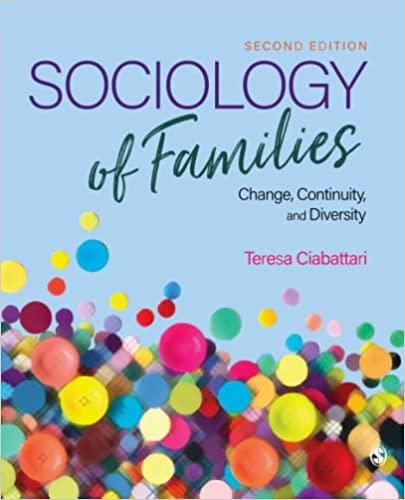Question
Answer the questions at the end of the pattern . You're the marketing manager for a sustainable clothing company and you've been tasked with developing
Answer the questions at the end of the pattern.
You're the marketing manager for a sustainable clothing company and you've been tasked with developing a marketing strategy for a new clothing label tentatively called, ForeverPurples. You've asked your team to pitch a multipronged campaign designed to embed ForeverPurples deep within the consumer psyche. Here is their proposed three-pronged campaign:
Prong 1: Your team found a new company that uses a combination of CGI, deepfake, and Industrial Light & Magictechniques to create videos that will feature the Indian "farms" and "farmers" who grow the exclusive organic cotton used by the ForeverPurples label. Of course, the "farms" and "farmers" don't actually exist even though the cotton used by the ForeverPurples label is actually grown in India. The problem from a marketing perspective is that these industrial-sized farms look, well, like farms. They don't look like what people "expect" a farm and farmer from India looks like. Research indicates that customers are more likely to perceive your product as "authentic" if they believe it was manufactured by people who they perceive as "authentic." As one of your team-members put it, "The cotton is from India so we need to give customers an image of what they expect."
Prong 2: Your team favors aninfluencer marketingcampaign forForeverPurples which helps bypass consumer resistance to the direct marketing campaigns of the past. Research shows that consumers are more likely to trust a brand promoted by someone they trust rather than promoted directly by the company itself. This prong would complement Prong 1 which is designed to create positive emotional reaction to the ForeverPurples label by linking it with pictures and stories of "authentic" Indian farms and farmers.
Prong 3: The sustainable clothing market is getting crowded because there is so much money to be made. However, this has emboldened less ethical companies to cut corners. Your team suggests a big spend with one or more major media outlets (Forbes, CNN, or NY Times) to sponsor stories that raise awareness of ethical lapses in the sustainable clothing market. In fact, your team has identified several former employees of a direct competitor who are disgruntled and ready to talk about ethical issues.
Discuss each prong of the proposed marketing campaign. Ethical? Not ethical? Presume that competitors have already launched or are preparing to launch similar multipronged campaigns.
Step by Step Solution
There are 3 Steps involved in it
Step: 1

Get Instant Access to Expert-Tailored Solutions
See step-by-step solutions with expert insights and AI powered tools for academic success
Step: 2

Step: 3

Ace Your Homework with AI
Get the answers you need in no time with our AI-driven, step-by-step assistance
Get Started


